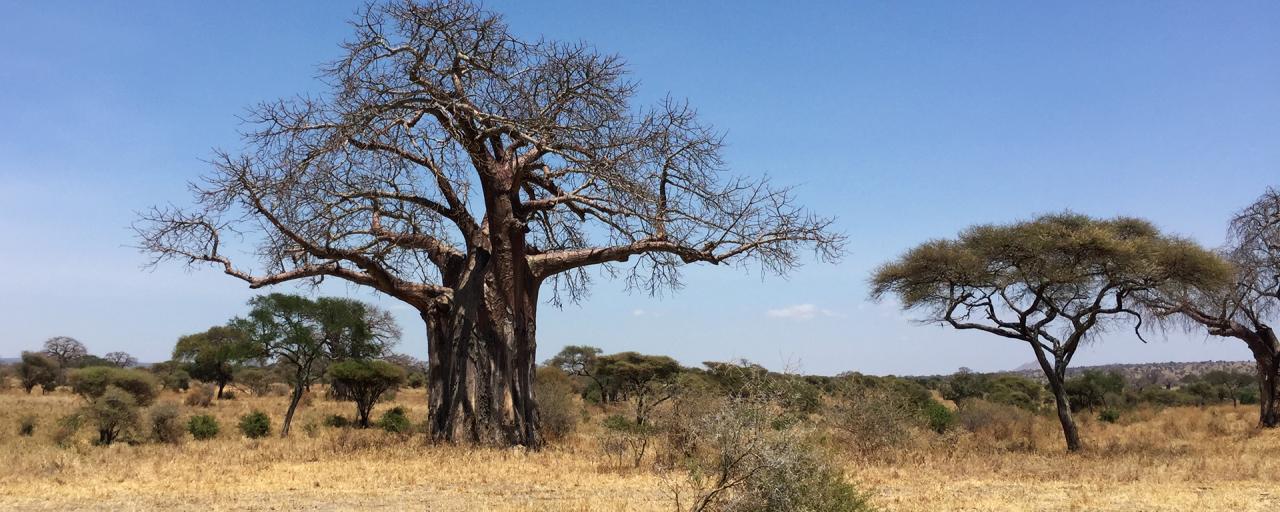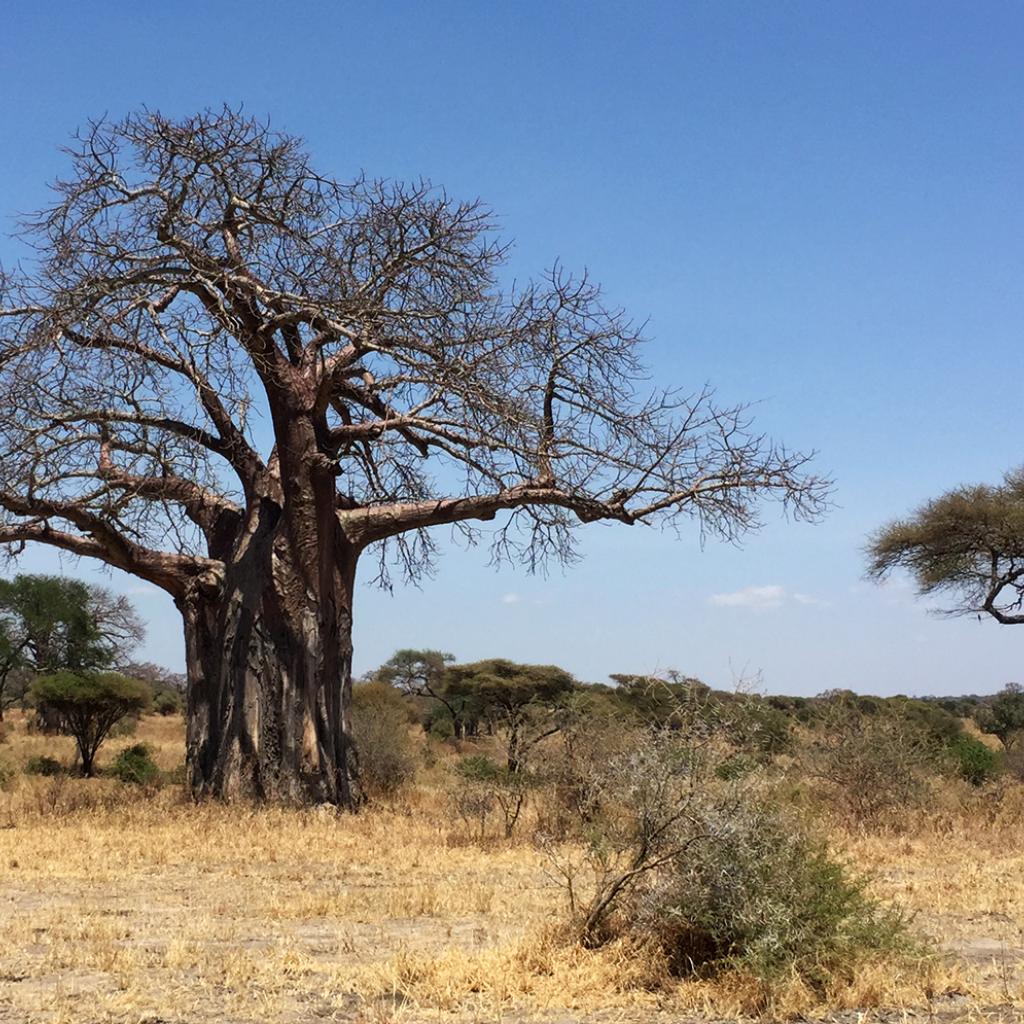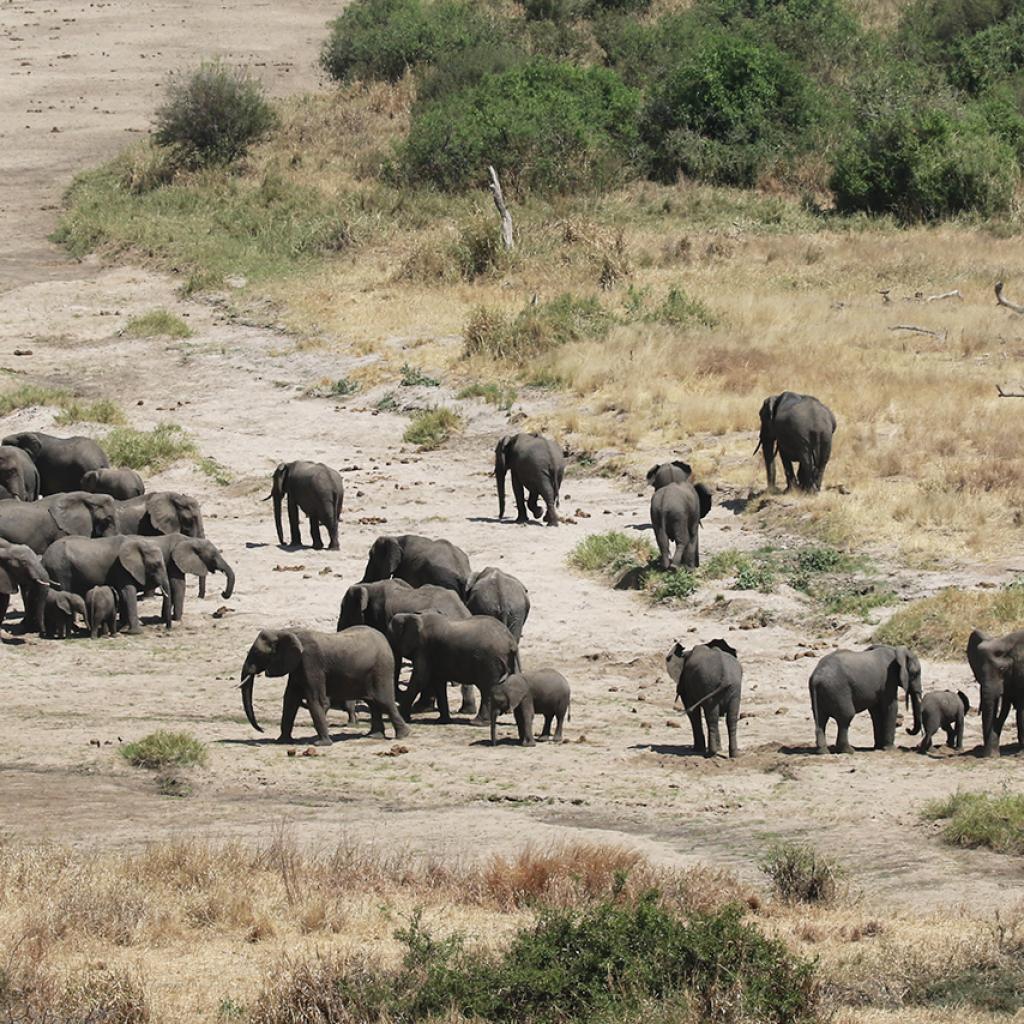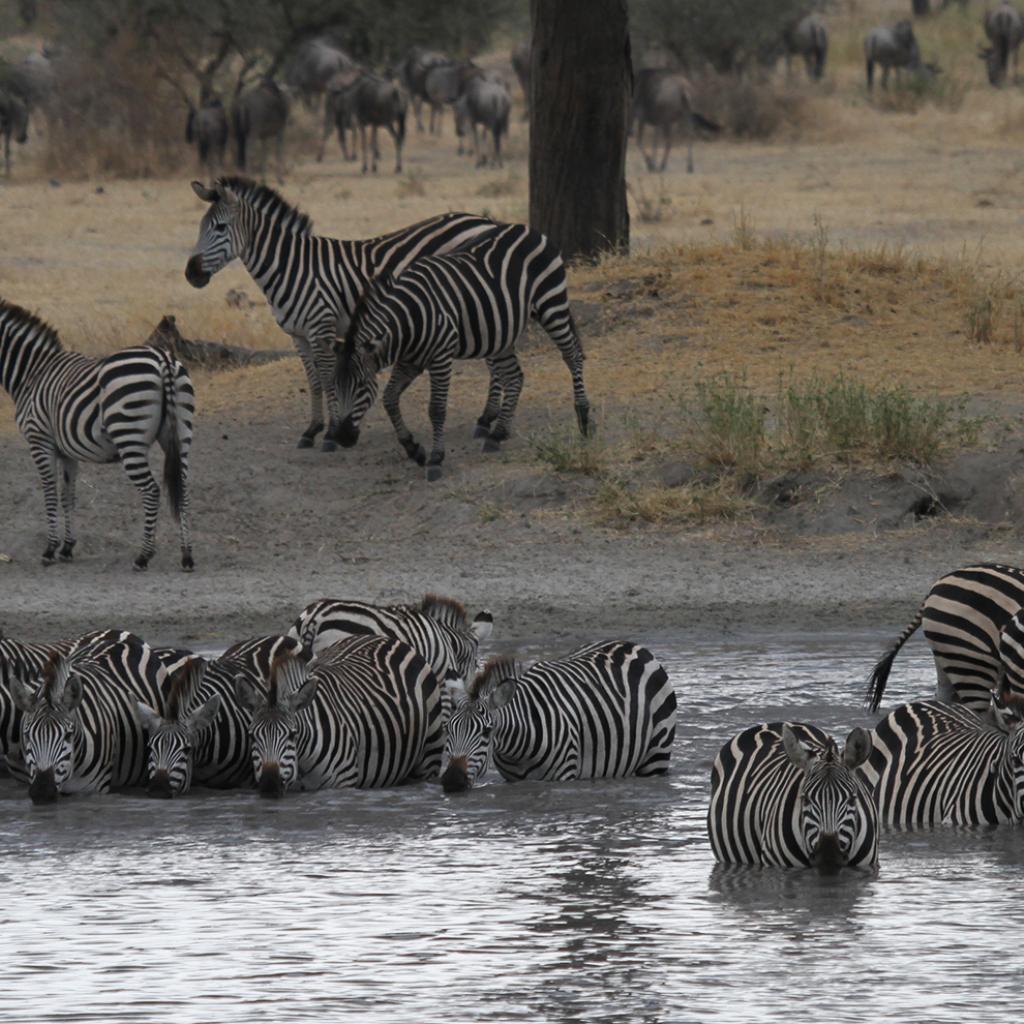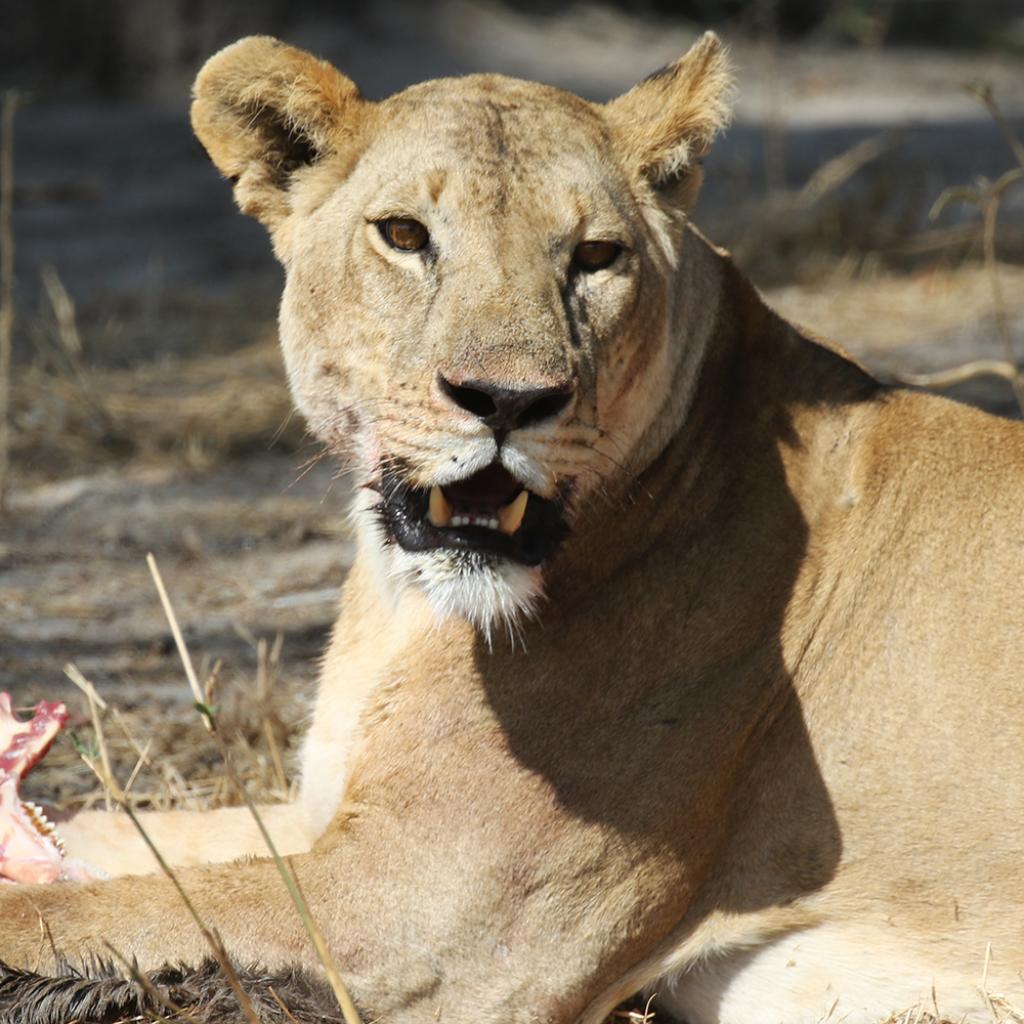The Tarangire National Park lies in Northern Tanzania at about 100 km, 2 hours’ drive, from Arusha city to the South-East; it is the fifth largest park in Tanzania with an area of about 2,600 sq.km., though it is part of a much larger ecosystem that covers more than 20,000 sq.km., that encompasses the Manyara Lake National Park, the Natron Lake, the Western part of the Kilimanjaro Mount, the Masai steppes, the Tarangire Conservation Area and some game controlled reserves.
The park is named after the Tarangire river, that flows permanently and is life-force for the animals living in this ecosystem and it is the only source of water in the dry season, from June to October; along its banks there is a high concentration of animals, one of the highest of the entire Tanzania.
In the dry season, it is quite common to spot huge herds of matriarchal breeding families consisting of over 100 individuals that go down to the river to drink or cool off in the water; they are certainly the most numerous herds that can be encountered in Tanzania and in the entire Africa.
Predators can also be easily spotted, especially lions, that remain lurking in the vicinity of the river waiting for their prey.
The park is also home to many species of herbivorous, such as impalas, kudus, elephants, warthogs, elands, reedbucks, wildebeests, giraffes, buffalos, zebras, ostriches, duikers, klipspringers, Thomson gazelles, Grant gazelles, waterbucks, hartebeests and dik-diks; it is also the only place in Tanzania where you can spot fringed-ears oryx and gerenuk; among carnivores, you can sight lions, leopards, cheetahs, jackals, spotted hyenas, striped hyenas, caracals, honey badgers, servals, bat-eared foxed, aardwolves, common dwarf mongooses and wild dogs; there is no lack of birds either: about 500 species of migrant and resident birds live in the park.
In this park and the ecosystem encompassing it, three different migration events occur over the year: the migration of elephants, the migration of wildebeests and zebras and the migration of buffalos, antelopes and gazelles.
During the dry season the Tarangire river is the only reliable water source in the area, along with the Silale swamp, and the animals gather here from June to October as they need water to survive.
While during the green season, that begins in November with the little rains and ends in May, pastures turn green and many ponds and seasonal rivers are full of water; animals then disperse within the 20,000 sq km of the ecosystem because they can find food and water everywhere.
In particular, the wildebeests and zebras move to the North and North-East, in the direction of the Manyara Lake National Park, the Ngorongoro Conservation Area and the Natron Lake; while buffalos, antelopes and gazelles tend to move to the South and South-East or to the Masai Steppe and game controlled reserves; the elephants move both North, North-East and to the South, South-East.
During a safari inside the park, in addition to the sighting of animals, it is possible to admire wonderful landscapes and the different environments offered by the Tarangire National Park, such as acacia forests, riverine forests, swamps, hills and ancient baobab trees that constitute a reserve of water for the elephants during dry times.
The park is less visited than the more famous Serengeti National Park and the Ngorongoro Conservation Area and, apart for exceptional cases, the Tarangire is never crowded and few cars are encountered there.
Besides the classic game drive safaris, you can go on a walking safari in some licenced camps and night-time safaris are allowed in the stretch of land bordering the Tarangire Conservation Area.


